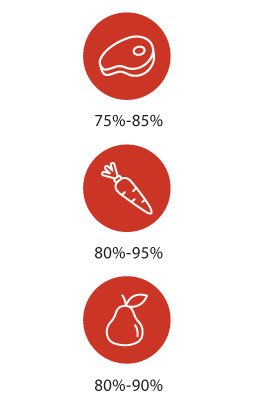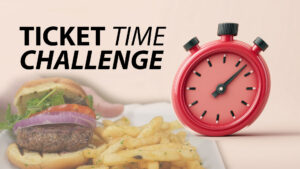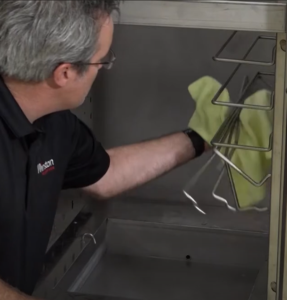Cooking with water is a fundamental aspect of culinary skills. After all, food is mostly water. Some foods, like fruits, veggies, or meats, can be over 90 percent water by weight. Understanding the science behind water and food can significantly elevate your cooking abilities.
Two important temperature measurements come into play when cooking with water: wet bulb temperature and dry bulb temperature. We will delve into the differences between wet bulb and dry bulb temperatures and how they influence the cooking process.

What is Wet Bulb Temperature?
Wet bulb temperature represents the temperature air can be cooled by the process of evaporative cooling. The wet bulb temperature is measured with a thermometer covered by a water-soaked wick or other porous fabric. The drier the air, the faster moisture evaporates, and the lower the web bulb temperature. Wet bulb temperature is always lower than dry bulb temperature. However, there is an exception. At 100% relative humidity, wet bulb and dry bulb temperatures are equal. But it’s physically impossible for the wet bulb to be higher than the dry bulb.
The wet bulb temperature is relevant in cooking with water because it mimics the cooling effect of evaporation, which is vital when working with water-based cooking methods like boiling, steaming, or simmering. As water evaporates from the food’s surface, it removes heat, allowing the food to cook evenly and prevent it from overheating.
What is Dry Bulb Temperature?
Dry bulb temperature is measured by a bare thermometer with no radiant heat affecting it (sunlight, radiators, Chippendales dancers, etc.). It’s what we think of as the air temperature.
In cooking, dry bulb temperature is crucial for understanding the rate at which heat is transferred to your food. Higher dry bulb temperatures mean more energy is available to cook your food, but it also increases the risk of overcooking or burning. Adjusting your oven settings to control the dry bulb temperature is essential for precise cooking.
CVap® Technology Controls Wet Bulb and Dry Bulb
Author Nathan Myhrvold eloquently described the role that water plays in cooking in his book series, Modernist Cuisine:
Water is also the medium in which most cooking is done. Sometimes we use it directly, as when boiling, steaming, extracting, or cooking sous vide. Water plays a role in ostensibly “dry” processes such as roasting and baking as well, yet many chefs fail to account for its effects. Whether it’s a liquid boiling or simmering in a pot, a vapor rising from a steamer, the humidity in an oven’s air, the liquid circulating in a cooking bath, or the crushed ice in a blender, the unique properties of water come into play in all manner of culinary operations. Faced with such powerful and ubiquitous phenomena, cooks must learn how to manipulate water or risk being foiled by it.

FOOD’S WATER CONTENT
Long before Myhrvold wrote Modernist Cuisine, our founder Winston Shelton studied water’s role in cooking. He deduced that to control food’s temperature, you must control the temperature of the food’s internal moisture. This led to the invention of CVap (Controlled Vapor Technology). Shelton developed it as a hot food holding technology. But he realized it could also revolutionize cooking.
Thermoisturization: New Technology, New Words
Never limited by existing language, Winston was fond of coining new terms. A significant Winstonism was thermoisturization. He defined it this way:
Thermoisturize: Taken from the words thermalize and moisturize…to mean the process of thermalizing while moisturizing. Also, ‘thermoisturization.’ The scientific world uses ‘thermalizing’ to represent the heat transfer phenomena in each of the processes. ‘Thermoisturization’ is coined to represent the simultaneous thermalization and moisturization of foods.
Chef Samantha Brown explained thermoisturization in more layman’s terms here.
The Laws of Thermoisturization
Shelton wrote The Laws of Thermoisturization. These explain the mechanics of controlling wet bulb and dry bulb temperatures inside an oven utilizing two heat sources. Ultimately, the reason wet bulb temperature control is more important is as follows:
- The large amount of moisture in all fresh foods.
- The enormous heat energy in water vapor.
- The ability to accurately control the amount of water vapor in the food’s atmosphere.
Certainly, that’s a lot of scientific jargon. A much simpler explanation of CVap can be found in this quirky video.
CVap generates heated vapor from a water reservoir (or evaporator) at the unit’s base. If the food is cooler than the evaporator, the heated vapor condenses on the food, heating it. On the other hand, food that’s hotter than the vapor temperature evaporates moisture, cooling it. Since evaporation and condensation are highly effective heat transfer phenomena, food temperature equalizes with the vapor temperature. Ultimately, food temperature is affected more by the vapor temperature than the air temperature. Food simply can’t drop below the vapor temperature.
Conventional Cooking vs. CVap Cooking with Water
Conventional Cooking
In a conventional oven, evaporation increases exponentially with the food’s temperature. Evaporation slows as food’s interior moisture decreases. As a result, the food dries out.
Indeed, evaporation is counterproductive for several reasons:
- Evaporative cooling hampers the heating process.
- Energy is wasted by evaporating moisture instead of heating food.
- Food quality decreases as moisture evaporates.
To serve at peak quality, food must be removed from a conventional oven as soon as it reaches the desired endpoint temperature. If not, food is overcooked.
CVap Cooking
In a CVap oven, food moisture cannot evaporate until food reaches vapor temperature. Critically, food heats more rapidly in the absence of evaporative cooling. As food reaches the selected endpoint, its temperature stops rising. This means food can remain in a CVap oven for extended periods without overcooking. Although CVap is powered by heated vapor, it doesn’t result in soggy food (unless the recipe calls for moist consistency).
CVap is a dual-heat system. While its vapor heat controls food temperature, its air heat controls the rate of evaporation from the food’s surface. By manipulating the ratio (or differential) of vapor heat and dry heat, CVap allows you to dial in the precise texture you desire, from moist to crisp.
Relative Humidity is Bull$h*t
Some manufacturers throw the term “relative humidity” around. They claim better control over food quality via relative humidity. However, when it comes to food, relative humidity is BS.

Relative humidity is simply a measurement of how much moisture air can hold before becoming saturated. But it changes, depending on the temperature.
“Controlling” relative humidity is a bit of a misnomer. Relative humidity can be the same percentage at a wide range of temperatures. You can have an RH of 50% with a dry-bulb temp of 62°F or 86°F or 150°F (and so on), depending on the wet-bulb temperature. Consequently, relative humidity’s effect on food temperature and quality is indirect, at best.
Experience the CVap Difference

That’s why CVap technology is so different. The other guys attempt to affect food by manipulating the oven’s air. But they have it backward. Only CVap directly controls vapor temperature, which dictates food temperature.
After all, do you want to heat air, or do you want to heat food?





